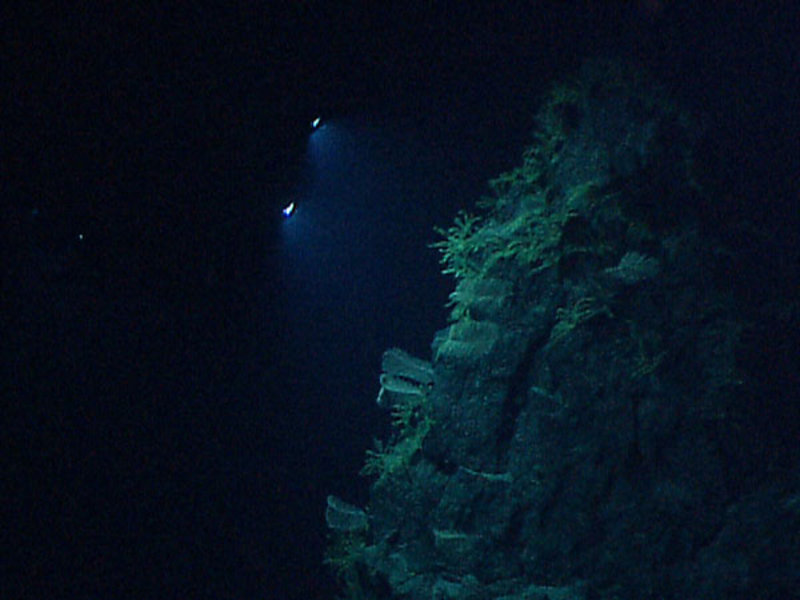Dive number 4 of cruise leg 3 is conducted on the submarine volcano termed "Site G". Today's ROV dive started about 2,100m deep at the summit of a knoll located southwest of the volcano's main cone. We moved northeast, and headed towards the main cone. The seafloor along the way was completely covered with sediments, containing low diversity and abundance of benthic creatures. Epifauna were dominated by brittle stars, giant protists, several octocorals and two remarkable fish. Two rocky outcrops were encountered during the transit to the cone, and each was home to a high concentration of biomass. Black corals were dominiant and many brittle stars were seen on both rock surfaces, while one also hosted bamboo corals and sea lilies. We climbed up hill over a steep slope as we moved east, and encountered a hard bottom area where the diversity and abundance of epifauna increased gradually with decreasing depth. A dominant southward downwelling current was observed. On the hard bottom substrates, the fauna was similar to those found in the deeper outcrops. In general the diversity was significantly lower than, for example, site K. But the localized abundances of fauna on hard substrates were very high. It is also noteworthy that the sizes of most organism were quite large. This could be taken as indicative of an ecosystem not limited by food but by availability of substrates.
